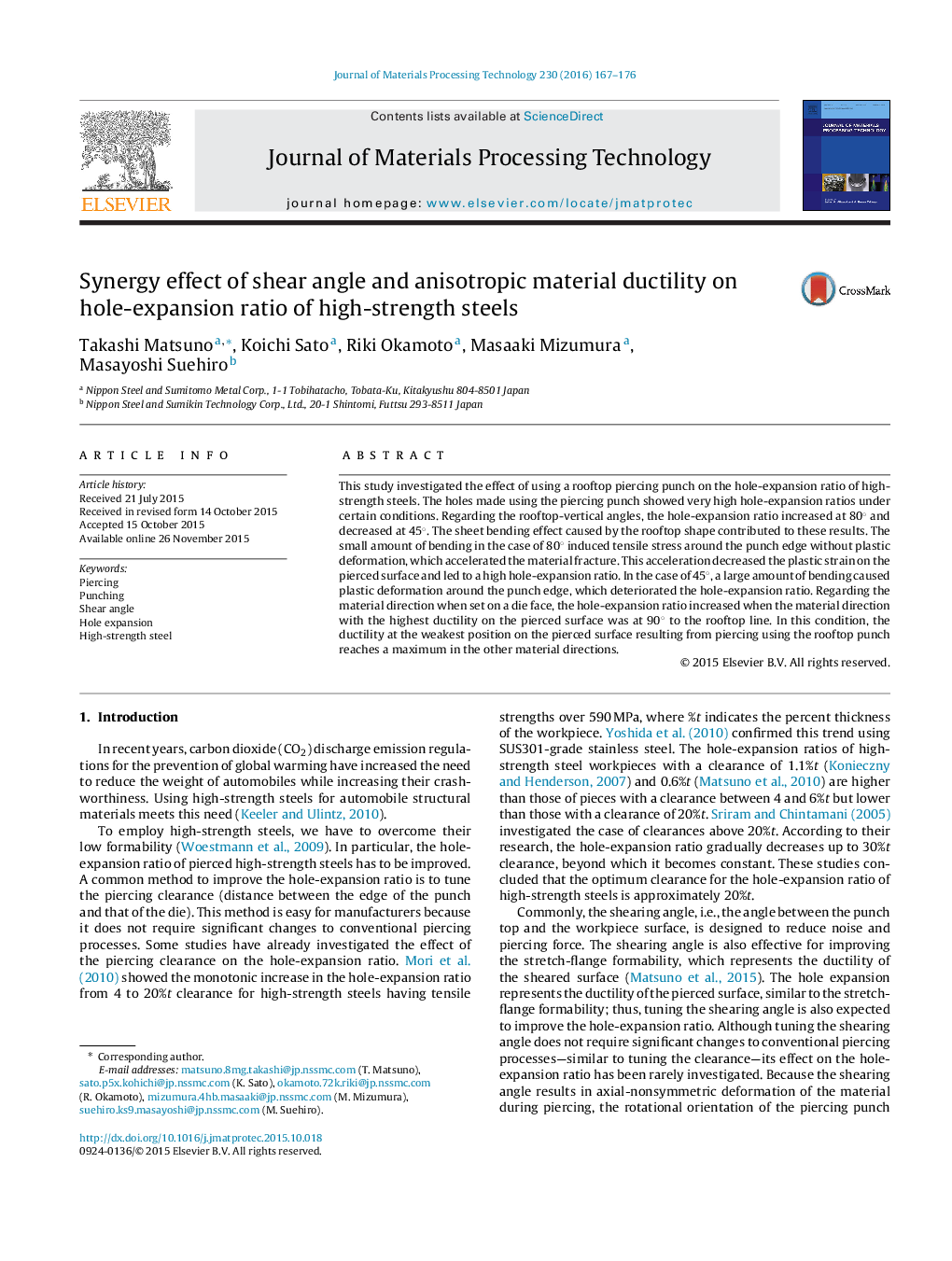| Article ID | Journal | Published Year | Pages | File Type |
|---|---|---|---|---|
| 797836 | Journal of Materials Processing Technology | 2016 | 10 Pages |
•The piercing punch with the dull rooftop improved the hole-expansion ratio.•The sharp rooftop deteriorated the hole-expansion ratios.•The hole-expansion ratio increased when the anisotropic material ductility redeemed the weakest point of the sheared surface.•Narrow clearances and high-tensile strength of the workpiece diminished the effects of rooftop piercing punch on the hole-expansion ratio.•Material anisotropic ductility was evaluated by the in-plane stretch bending test for the sheared edge.
This study investigated the effect of using a rooftop piercing punch on the hole-expansion ratio of high-strength steels. The holes made using the piercing punch showed very high hole-expansion ratios under certain conditions. Regarding the rooftop-vertical angles, the hole-expansion ratio increased at 80° and decreased at 45°. The sheet bending effect caused by the rooftop shape contributed to these results. The small amount of bending in the case of 80° induced tensile stress around the punch edge without plastic deformation, which accelerated the material fracture. This acceleration decreased the plastic strain on the pierced surface and led to a high hole-expansion ratio. In the case of 45°, a large amount of bending caused plastic deformation around the punch edge, which deteriorated the hole-expansion ratio. Regarding the material direction when set on a die face, the hole-expansion ratio increased when the material direction with the highest ductility on the pierced surface was at 90° to the rooftop line. In this condition, the ductility at the weakest position on the pierced surface resulting from piercing using the rooftop punch reaches a maximum in the other material directions.
